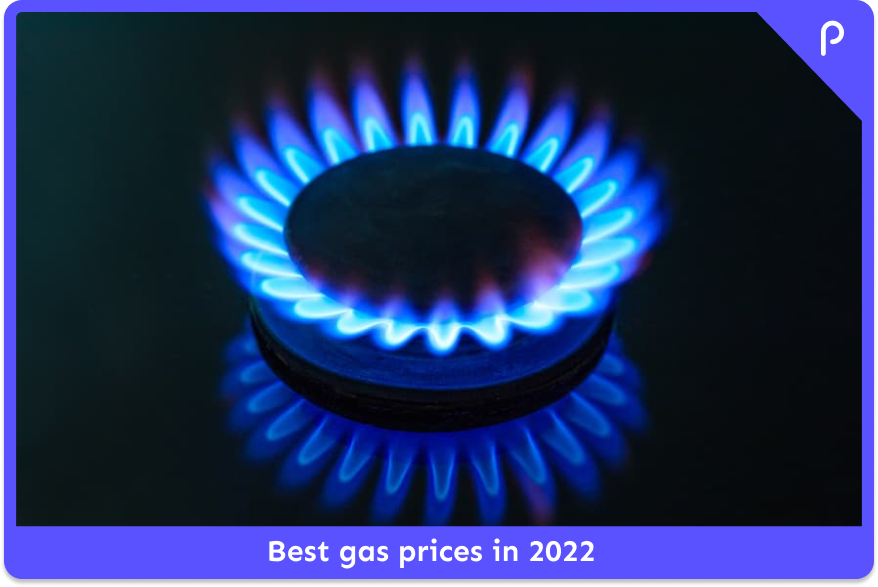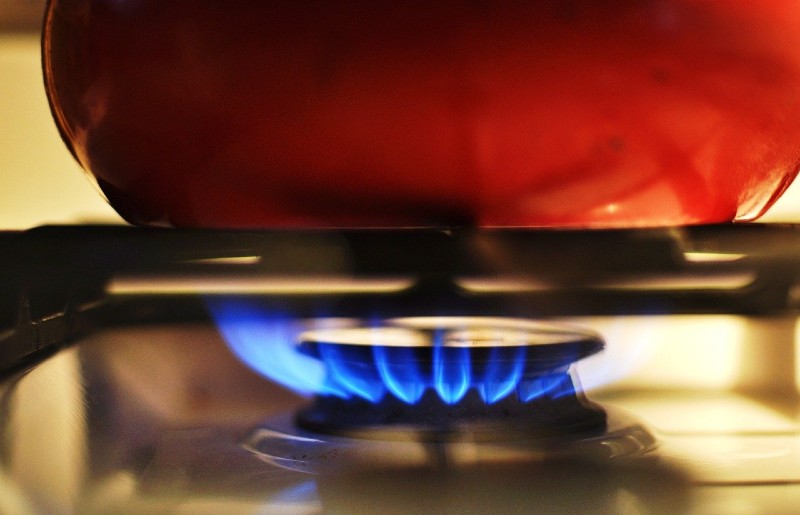Compare gas prices to find the best deal for 2022

We compare the market to find you the perfect deal
We study all energy suppliers daily to identify the best deals custom-fitted to your needs. You just have to take your pick.
Compare the market here
Comparing gas prices before you switch is the best way to ensure you find a good deal on your energy supply. Rates, deals and services can vary significantly between suppliers, so it’s very important to take a look at the latest tariffs before signing on the dotted line. Here, we take a look at how to compare gas prices to find the tariff that’s right for you.
Last update: November 2022
As you may have heard on the news, the UK energy market is currently under an immense amount of stress as a result of a global gas shortage driving up costs and putting several energy suppliers out of business. To learn more about this and stay updated on a daily basis you can read our page on the UK energy crisis.

The best way to compare current gas prices is to use a trusted, impartial comparison tool, like our Switch Plan. This will allow you to see exactly how much different suppliers charge and compare unit prices, standing charges and extra fees side by side.
How do I compare gas prices ?
Gas prices can vary between suppliers and change at different times of the year. They are influenced by a range of economic factors including supply and demand, availability and transport costs. As gas prices can change from one month to another, it’s important to compare gas prices before signing up to a new deal or switching supplier. You can do this quickly and easily using an impartial comparison tool like our Switch Plan. Using a comparison tool – rather than checking numerous individual supplier websites – means you only have to put your information in once. This can save you a lot of time and make it easier to directly compare the offers available. Make sure you use a comparison tool that’s completely impartial as this will ensure you see the deals that are really right for you. Good quality comparison sites will also provide you with expert tips and advice to help you switch with confidence.
What is the average cost of gas per kWh?
Before you begin to compare gas prices, it’s a good idea to get a general idea of the cost of gas. According to energy market regulator Ofgem, the average amount medium-use UK households paid for a kWh of gas in 2020 was 4.4p. This makes the UK one of the cheaper countries for gas in Europe. Putting us well below Sweden (10.29p/kWh), Spain (9p/kWh), the Netherlands (8.51p/kWh) and Italy (8.23p/kWh). However, it makes us more expensive than Luxembourg (3.65p/kWh), Poland (4.1p/kWh) and Romania (2.93p/kWh). As Brits tend to use a lot of gas – it fires the majority of central heating systems across the country – this low unit cost adds up fast. On average, UK households paid around £663 for their annual gas usage in 2019. Below you'll find the currently cheapest and available gas tariffs in the UK.
*Prices differ on a postcode basis, this table therefore displays national averages
*Based on Ofgem’s TDCV (2,900.00 kWh of ⚡ and 12,000.00 kWh of 🔥 per year).
**A Green tariff means the supplier injects in the grid the same amount of renewable energy that is consumed.
*Prices displayed are national averages
*Based on Ofgem’s TDCV (2,900.00 kWh of ⚡ and 12,000.00 kWh of 🔥 per year).
**Is a Green tariff if all the energy consumed is compensated by renewable energy injections in the grid.
What types of gas tariff can I get?
When you start to compare gas prices, you’ll see that there are two main types of tariff: fixed and variable.
Fixed rate gas tariff
If you opt for a fixed rate tariff, you’ll agree a price per kWh for gas with your supplier at the beginning of your contract. This price will stay the same for the duration of your deal. Most fixed rate contracts run for either 12 or 24 months, though longer deals are available from some suppliers. The benefits of a fixed rate deal are:
- Set price for each kWh of gas you consume
- The price you pay won’t be affected by ups and downs in the energy market
- Fixed rate tariffs are generally cheaper than variable options
- Fixed rate tariffs can make it easier to budget for your energy bill
However, there are some downsides with choosing this option, these include:
- Exit fees if you want to leave your contract early
- Inability to switch between suppliers or deals whenever you want
- If wholesale energy prices fall, you could be left paying more than you need to
While the amount you pay for each kWh of gas you use is fixed with this type of contract, it’s important to note that the total you pay for your energy is still determined by the amount of gas you use. This means that you’re still likely to pay considerably more for your gas in the cold winter months than during warmer parts of the year.
The table below shows the three cheapest offers for fixed-rate gas tariffs.
*Prices displayed are national averages
*Based on Ofgem’s TDCV (2,900.00 kWh of ⚡ and 12,000.00 kWh of 🔥 per year).
**A Green tariff means the supplier injects in the grid the same amount of renewable energy that is consumed.
Variable rate gas tariff
The other option available is a variable rate tariff. Variable tariffs track the wholesale price of gas and so can go up and down every month. If you choose a variable rate deal, you won’t be signed up to your supplier for a set period and so will be able to switch tariff or energy company whenever you want. The main benefits of a variable rate tariff are:
- You’re free to switch between suppliers and tariffs to get the best deal
- You won’t pay exit fees if you move to a new address or change supplier
- If market prices drop, you’ll pay less for your gas
The cons of a variable rate tariff are:
- The amount you pay for a unit of energy can go up and down, making it harder to budget
- If wholesale prices go up, your gas bill could become expensive
- Variable rate deals are generally more expensive than fixed rate tariffs
As both variable and fixed rate tariffs come with their own pros and cons, the deal you choose will depend on your own preferences and requirements. If you do decide to go for a fixed rate tariff, one thing it’s important to be aware of is the end date for your deal. Most energy companies automatically move customers onto a default variable rate when their contract expires. This can often be more expensive than your previous fixed rate deal and could cause your energy bills to rise sharply. To avoid this, sign up to a new fixed rate tariff, or switch to a new supplier, as soon as your previous deal expires. Following you'll find the three cheapest variable-rate gas tariffs.
*Prices differ on a postcode basis, this table therefore displays national averages
*Based on the official TDCV : 2,900.00 kWh of ⚡ and 12,000.00 kWh of 🔥 per year
**A tariff is green if for each kWh consumed a kWh of renewable energy is injected in the grid.
What to look out for when comparing gas suppliers?
Comparing gas prices from different energy suppliers isn’t always easy. There are various factors you need to take into account when choosing your new energy company and your new deal, so it’s important to put some serious thought into your gas supply before you sign on the dotted line. To help you find the deal that’s right for you, we’re taking a look at some of the most important things to consider when you compare gas prices and energy suppliers.


Looking to compare different energy suppliers?
⭐️ Free Service
Compare and choose the best energy suppliers for your home.
More info
How does switching gas suppliers work?
Once you’ve used our Switch Plan to find the right deal, switching is easy. The process will take around 21 days and your new supplier will take care of all of the admin and notify your old supplier that you’re leaving. When switching suppliers, you won’t experience any disruption to your gas supply. Once the switch is complete, you’ll get a bill from your new supplier and can begin enjoying lower gas prices.
Can I switch gas tariffs if I’m a tenant?
As long as your name is on your energy account, you’re free to switch supplier whether you’re a tenant or owner-occupier. If you’ve just moved into a new property, you may need to wait until you get your first bill from your existing supplier before you switch. This will ensure that you’re in the system and your details are fully up to date. You can then start shopping around for a better deal.
Will I get a smart meter from my new gas supplier?
Smart meters are slowly being rolled out across the UK. They’re more convenient than conventional gas meters as they send automatic readings to your energy supplier so you don’t have to worry about reading the figures yourself. This ensures your bill is always as accurate as possible. ![]()

How are gas prices set?
Gas prices change according to a number of factors. The most important is the wholesale price of gas. If the demand for gas goes up, or supplies fall, the price of wholesale gas is likely to rise. On the other hand, if demand drops or there is an abundance of gas, the cost of wholesale gas will go down. These fluctuations are passed onto the consumer. This is why variable tariffs go up and down according to market influences. The table below shows a more detailed breakdown of the different factors that influence your household gas bill.
| Wholesale costs | 46.24% |
|---|---|
| Networks | 25.64% |
| Operating costs | 20.41% |
| Environmental and social obligation costs | 1.86% |
| VAT | 4.76% |
| Supplier pre-tax margin | -0.49% |
| Other direct costs | 1.58% |
How often do gas prices change?
Wholesale gas prices are changing constantly. However, as most of these changes are relatively small, you’re unlikely to notice them in your energy bill. If you’re on a fixed rate tariff, the main occasion you’ll notice your gas price change is when your contract comes to an end. At this point, the fixed rate you agreed with your supplier will expire and you’ll be put onto your energy company’s default variable rate. Signing up for another fixed rate tariff, or switching supplier, is the best way to minimise these price increases. You may also notice your gas price changes in April and October when the Ofgem energy price cap comes into effect.
What is the energy price cap?
The energy price cap is set by energy industry regulator Ofgem. The cap is there to ensure that households pay a fair price for the energy they consume. Ofgem reviews the price cap twice a year to ensure it’s in line with market trends. These reviews take place in February and August. If any changes are made to the price cap, they come into force in April and October respectively. Currently, the Ofgem energy price cap is set at £1,042.
Which suppliers offer green gas?
More and more UK households are prioritising sustainability when choosing a new gas supplier. If lowering your carbon footprint is important to you, selecting an energy company that offers green gas is a great way to start.
What is green gas?
Green gas is a term used to describe gas that doesn’t come from fossil fuel reserves. Instead of being extracted from ancient gas deposits underground, green gas is created by the breakdown of organic products like grass cuttings, animal manure and other waste products. The gas that’s produced when these components rot is collected, processed and used to power our homes. Currently, there’s not a lot of green gas being produced, however some suppliers do promise that at least a percentage of your gas will come from green sources. Other suppliers offset the gas you use so that the processes of gas extraction and consumption are carbon neutral. Currently, suppliers offering green or offset gas include:
- Bulb
- Octopus Energy
- Green Energy UK
- Outfox the Market
- Ecotricity
- Ovo Energy
Is green gas more expensive than regular gas?
Green gas is slightly more expensive than natural gas. However, as more and more households opt for this sustainable option, production will go up and prices are likely to come down. Already, around one million UK homes use green gas.
Looking to compare energy suppliers?Leave your phone number to request a call back from us!
Free Service
FAQ
Which energy supplier is the best?
As different customers have different needs and requirements, there’s no one ‘best’ energy supplier. However, there are some that consistently come top of customer and industry rankings. These include:
- Octopus Energy
- Bulb
- Outfox the Market
- Avro Energy
- People’s Energy
What is a dual fuel tariff?
A dual fuel tariff is a tariff that covers both your gas and electricity. These types of tariffs can often be cheaper than single fuel deals. Most energy suppliers offer a choice of dual fuel tariffs.
Will I have to pay an exit fee when I switch gas suppliers?
If you’ve signed up for a fixed rate tariff with your current supplier and your deal hasn’t yet come to an end, you may have to pay an exit fee when switching. This will probably be around £20 to £30 per fuel.
Will switching to a new gas supplier affect my current supply?
Switching to a new gas supplier won’t affect your current supply. You won’t see any interruption to your service, the only difference you’ll notice is the supplier name on your next bill.
Updated on 11 Nov, 2022
William Dautel
Website manager
William is a content marketing specialist. After 3 years writing brand strategies he joined papernest to help create the best content to help people handle and save on their utilities.
William is a content marketing specialist. After 3 years writing brand strategies he joined papernest to help create the best content to help people handle and save on their utilities.
Alexander Striano
Energy Specialist & Copywriter
Alex joined the papernest team as a SEO Project Manager Assistant for Broadband Plans. He has developed a real expertise on connectivity topics and works on delivering the best possible content to help you navigate your broadband in and outside your home.
Alex joined the papernest team as a SEO Project Manager Assistant for Broadband Plans. He has developed a real expertise on connectivity topics and works on delivering the best possible content to help you navigate your broadband in and outside your home.










